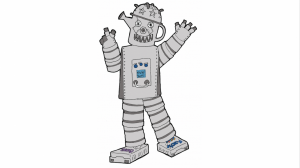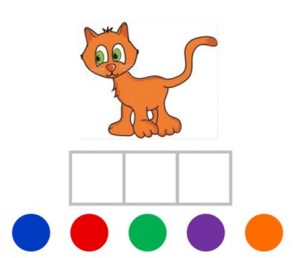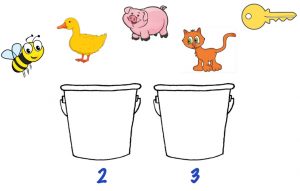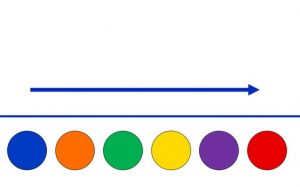Virtual Teaching Resource Hub
Instructional Activities
Phonemic Awareness
Phonemic awareness, or the ability to notice and manipulate individual sounds in spoken language, is an essential building block for later decoding skills. The activities below are designed to promote the development of various phonemic awareness skills.
Robbie the Robot
 The scripted lessons in this packet provide the teacher with a simple, fun method of teaching students the most important phonological skills: phoneme blending and segmenting. The premise is that communicating with Robbie the Robot requires the student to blend and segment. Robbie can only say words one sound at a time, which requires students to blend sounds to figure out what he said. He can also only “understand” words when the student says them one sound at a time, which requires the child to segment sounds. For young children, this explanation tends to be very accessible.
The scripted lessons in this packet provide the teacher with a simple, fun method of teaching students the most important phonological skills: phoneme blending and segmenting. The premise is that communicating with Robbie the Robot requires the student to blend and segment. Robbie can only say words one sound at a time, which requires students to blend sounds to figure out what he said. He can also only “understand” words when the student says them one sound at a time, which requires the child to segment sounds. For young children, this explanation tends to be very accessible.
Robbie the Robot Image (PowerPoint)
Robbie the Robot Image (Google Slide)
Sorting Game
Sorting words based on the way they sound is a great way to help children develop phonemic awareness and their attention to important details. In the Sorting Game, children name the pictures provided to sort words based on either the number of syllables or the number of phonemes within the word.
Elkonin Boxes
 Elkonin boxes are a great way to develop phonemic awareness, focusing specifically on phonemic segmentation practice. Students count the sounds in each word first, and then they move a chip into each box to represent each sound.
Elkonin boxes are a great way to develop phonemic awareness, focusing specifically on phonemic segmentation practice. Students count the sounds in each word first, and then they move a chip into each box to represent each sound.
Watch Elkonin Boxes Sample Lesson
Elkonin boxes 2 phonemes (PowerPoint)
Elkonin Boxes 2 phonemes (Google Slides)
Elkonin boxes 3 phonemes (PowerPoint)
Elkonin Boxes 3 phonemes (Google Slides)
Elkonin Boxes 4 phonemes (PowerPoint)
Elkonin Boxes 4 phonemes (Google Slides)
Phoneme Counting Bead String
Say It-Move It PA Practice
Say It-Move It (Google Slides)
Say It-Move It is an instructional routine that can be used at all levels of phonemic awareness development. For beginners, have the student simply move a chip for each sound (as with Elkonin boxes). For more advanced students, present challenges by having them manipulate sounds within a word (e.g., lip → lips → slip → slap → laps).

 Sorting Game (PowerPoint)
Sorting Game (PowerPoint) Say It-Move It (PowerPoint)
Say It-Move It (PowerPoint)